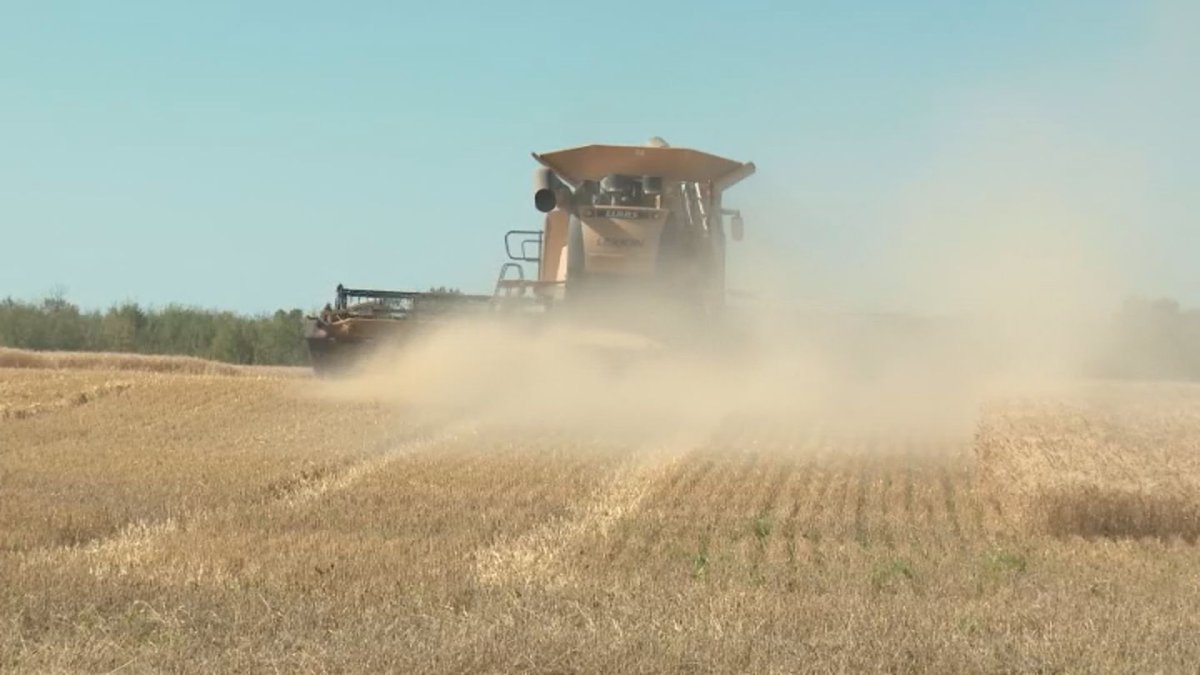Moisture in the past week did little to alleviate drought conditions as the harvest of the 2021 crop continues, Saskatchewan Agriculture reported Thursday.

Sask Ag said much of the province received small amounts of rain, with a half-inch to an inch reported in parts of the northern, west-central and southeast regions.
The precipitation helped to slightly increase soil moisture conditions, according to the crop report.
Cropland topsoil moisture is currently rated six per cent adequate, 32 per cent short and 62 per cent very short.
Hay and pasture land topsoil moisture are rated five per cent adequate, 28 per cent short and 67 per cent very short.
Producers are reported to have made considerable headway with the harvest, with seven per cent of the crop combined and six per cent ready to straight combine.
The five-year average for this time of year is one per cent combined and two per cent ready to straight combine.
Overall, 54 per cent of winter wheat, 51 per cent of fall rye, 37 per cent of field peas and 29 per cent of lentils are now in the bin.
Many producers have reported below-average hay yields, Sask Ag reported.
The estimated average dryland hay yields for the province are 0.80 tons per acre for alfalfa, 0.70 tons per acre for alfalfa/bromegrass, 0.60 tons per acre for other tame hay, 0.60 tons per acre for wild hay and 1.0 tons per acre for greenfeed.
For irrigated hay yields, the estimated averages are 1.3 tons per acre for alfalfa, 1.80 tons per acre for alfalfa/bromegrass and 2.2 tons per acre for greenfeed.
Relief measures
The Saskatchewan government has announced a number of relief measures over the past few weeks for producers affected by the drought.
On Tuesday, the province announced $119 million in direct support to livestock producers.
Saskatchewan has also requested the federal government provide its full 60 per cent cost-share to the AgriRecovery program to increase the total to $297 million.
The program will provide a per head payment to help maintain female breeding stock.
Saskatchewan Crop Insurance Corp. previously announced it is doubling the low yield appraisal threshold values for its customers who salvage their cereal or pulse crops as feed, without negatively impacting future individual coverage.
SCIC said customers should contact their local office first to discuss options before they graze, bale or silage any damaged crops.
The Saskatchewan government said it is providing relief to livestock producers by temporarily increasing the maximum funding from the Farm and Ranch Water Infrastructure program to $150,000 from $50,000.
The program is for dugouts, wells and pipelines for agriculture use, with the first $50,000 based on a 50-50 cost-share and the remaining $100,000 on a 70-30 government-producer cost-share.
More information on the program is available by contacting the Agriculture Knowledge Centre at 1-866-457-2377.
Farmers stress line
Sask Ag said the Farmers Stress Line is available 24 hours a day for any needed support at 1-800-677-4442.
The service is run by Mobile Crisis Services Regina and all calls are confidential.




Comments